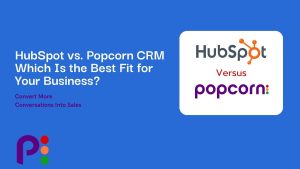Why Do We Segment Customers?
Customer segmentation is a foundational concept for marketing to any audience, as it helps you define the sort of people you’re selling your custom to—usually depending on specific attributes. Most commonly, these are:
– Demographic
– Personal attributes such as age, gender, occupation, etc.
– Psychographic
– Lifestyle choices that form their habits, personality
– Behavioural
– How they interact with a business, from discovery to conversion
– Geographic
– Their location
From these basic segmentation criteria, you can start to form a real idea of who your audiences are as people, and create personas for your target audience. But segmenting customers doesn’t stop there.
The Benefits of Segmenting Customers
Customer segmenting transforms your marketing efforts. Instead of making general content that likely won’t appeal to your intended audience, you make your output something they can relate to—and capture their attention with it.
Key to this is the ability to speak their language—abstractly and literally. What you’re talking about will chime with what they’re talking about: the situations they find themselves in, the language used in their industries, or environments, and the actions they’ll take to find solutions. As a business, you’re meeting them at their level.
Not only this, but being relatable and speaking their language helps foster a sense of trust from your prospect. After all, if you know what you’re talking about in the way they do, then surely you can be trusted to understand—and deliver on—the problem.
Customer Segmenting in Your CRM
Your customer segmenting doesn’t have to be restricted to simply personas. Besides, they would be almost redundant if that were the case, as databases tend to be so large that not being specific in your segmentation would make marketing nearly impossible.
Segmenting is an essential component of keeping a database of contacts, who can be similar and different for a whole multitude of reasons. This gets reflected in your CRM: they have tools that allow you to categorise your data, give it value and relationships to each other.
So how does segmenting customers in your CRM make your marketing easier?

Segmenting Customers: Making Sense
As you use segmentation to understand your possible leads out there in the world, so you have segmentation to understand your database in your slice of the world. Knowing who your contacts are, what they do, and what they like, transforms your job from painting on a blank canvas to joining up the dots. From the start, you can identify the language they’re speaking and why they’re speaking it, making your marketing possible, and making your marketing successful.
Segmenting Customers: Getting to Know Your Prospects
As mentioned before, understanding your prospects isn’t just about language; it’s about trust. Segmenting provides the chance to target your prospects better; it also gives the opportunity for you both to gather information about each other, business and prospect alike. Knowing the different ways to reach out will make that handshake rewarding, and much more likely. You can only meet in the middle if you know where the middle is, after all!
Segmenting Customers: Spot the Patterns, See the Bigger Picture
Having your contacts ordered and segmented can help you to see the bigger prospecting picture. Segmenting can help you spot trends that are happening for multiple prospects, whether they’re applicable to one segment or more. This all contributes to the refinement of your marketing and selling, and the improvements you make will positively affect your whole sales process, bettering your conversion rate as a result.
Segmenting Customers: Accurate Campaigns
As we all know well, campaigns live and die by their intended audience. Segmenting is therefore crucial: the right message has to go to the right people at the right time.
The more data you gather for that targeted audience, the more you can tweak the message to reflect the language your campaign’s audience will be speaking. Your successful targeting should be reflected as you test and measure your campaign. For future campaigns, you can gauge just how targeted you need to be to pull off campaigns that produce the results you need.
Segmenting Customers: Informing the Future
Business is built on growth; on progress and evolution. As your business grows, your segmented data can provide you with a snapshot of where you are currently—and this can help inform your next moves. Where are you doing to attract and retain these customers? Why are you successful here? Is this, even, an audience you want to continue targeting?
You can learn much from your customers. They can provide feedback, or open you up to new areas of business you didn’t expect. This information, and where it comes from, can contribute significantly towards your next steps, especially on how you define yourself as a business going forward.

Segmenting Customers in popcorn: Tagging
Segmenting is vital for adopting a CRM into your business, no matter how big or small your business is. Therefore, the tool your CRM uses to segment your data needs to work with how business is structured.
In popcorn, segmenting customers is achieved through its tagging system. By adding tags to a contact’s profile, you can store information about your contact in a simple, visual and accessible place. These tags can act as simple notes—such as, ‘likes dogs,’ for example. Or, they can be used to filter by the marketing standards: demographic, behavioural, etc. Tags can then be used to segment your database, to search for particular contacts or to build an email or campaign. These are edited by you, so you’re fully in control.
popcorn’s system stays true to form: it’s simple, visual and effective. You can find out about popcorn’s tagging and how you can manage tags across the platform, by watching the video here.
Enjoyed this post? Comment below or read through our blog for more lead management and CRM tips, especially for small businesses.











